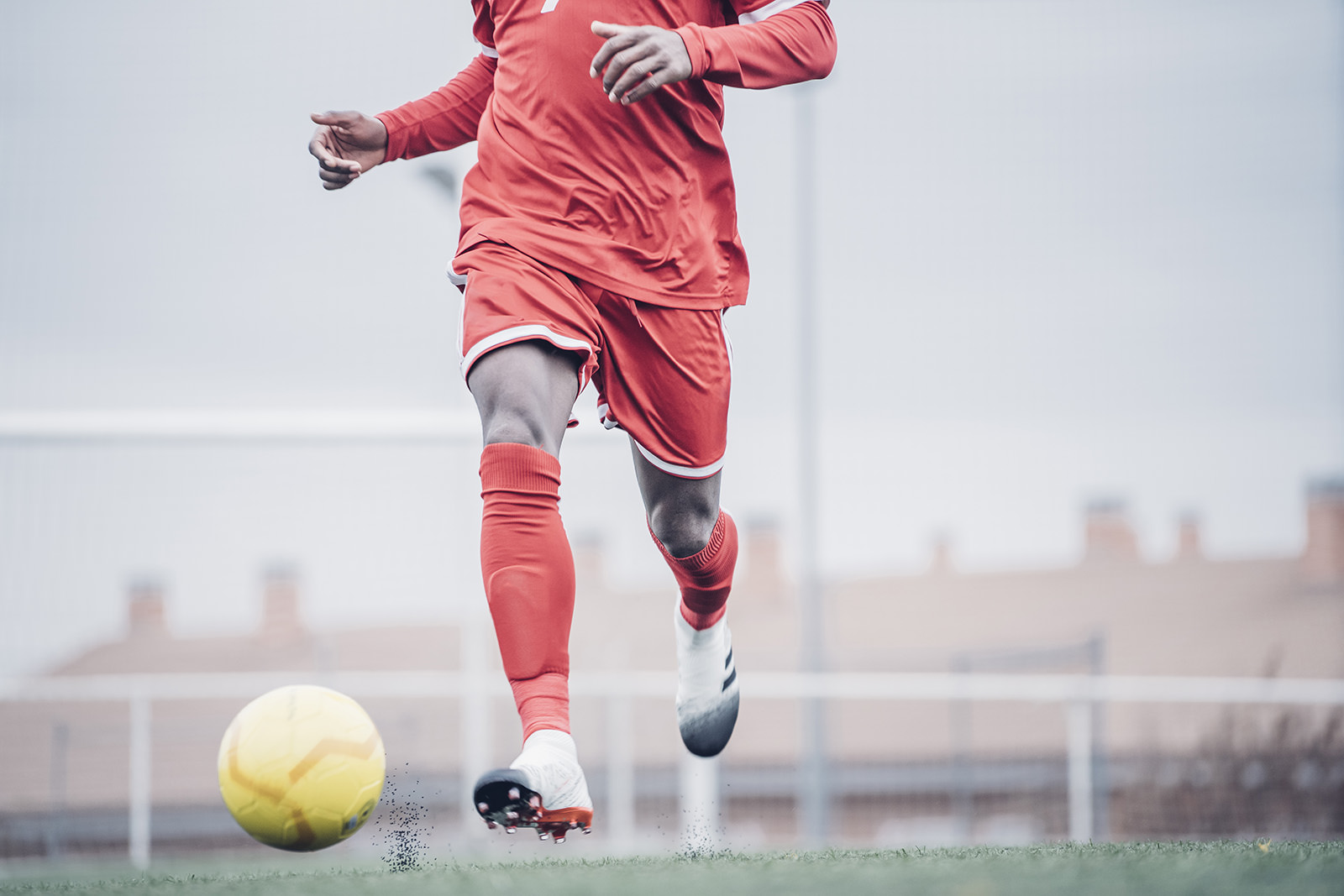
Shoulder (Dislocation)
Knee (ACL / Meniscus)
Wrist (Scaphoid fracture)
Male
The overall incidence of injuries in professional male football players was 8.1 injuries/1000 hours of exposure. Match injury incidence (36 injuries/1000 hours of exposure) was almost 10 times higher than training injury incidence rate (3.7 injuries/1000 hours of exposure). Lower extremity injuries had the highest incidence rates (6.8 injuries/1000 hours of exposure). The most common types of injuries were muscle/tendon (4.6 injuries/1000 hours of exposure), which were frequently associated with traumatic incidents. Minor injuries (1-3 days of time loss) were the most common. The incidence rate of injuries in the top 5 European professional leagues was not different to that of the professional leagues in other countries (6.8 vs 7.6 injuries/ 1000 hours of exposure, respectively).
Female
The overall incidence of injuries in female football players was 6.1 injuries/1000 h of exposure. Match injury incidence (19.2 injuries/1000 h of exposure) was almost six times higher than training injury incidence rate (3.5 injuries/1000 h of exposure). Lower extremity injuries had the highest incidence rates (4.8 injuries/1000 h of exposure). The most common types of injuries were muscle/tendon (1.8 injuries/1000 h of exposure) and joint (non-bone) and ligament (1.5 injuries/1000 h of exposure), which were frequently associated with traumatic incidents. Slight/minimal injuries (1-3 days of time loss) were the most common. The incidence rate of injuries during matches in the top five world ranking leagues was higher than the rest of the leagues (19.3 vs 10.7 injuries/1000 h of exposure, respectively). The weighted injury proportion was 1.1 (95% confidence interval = 0.6-1.7) whereby on average players sustained more than one injury per season.
There are many ways to minimise injuries. Sleep (rest/recovery), hydration, nutrition are some that require the least amount of preparation and have immediate effects. Another importantfactor affecting injury rates is strength. Tissues often get damaged when there is suddenly a demand from them to absorb/produce a force higher than their capacity. By building up strength you can increase the threshold.
Exercises
RUNNING – STRAIGHT AHEAD
Make a course of up of six to 10 pairs of parallel cones, approximately five to six meters apart. Two players can start at the same time from the same pair of cones. Jog together all the way to the last pair of cones. On the way back, you can progressively increase your speed as you warm up. Do two sets.
RUNNING – HIP IN
Walk or jog comfortably, stopping at each pair of cones to lift your knee and rotate your hip outward. Alternate between left and right legs at successive cones. Do two sets.
RUNNING – HIP OUT
Walk or jog comfortably, stopping at each pair of cones to lift your knee and rotate your hip inward. Alternate between left and right legs at successive cones. Do two sets.
RUNNING – STRAIGHT AHEAD
Make a course of up of six to 10 pairs of parallel cones, approximately five to six meters apart. Two players can start at the same time from the same pair of cones. Jog together all the way to the last pair of cones. On the way back, you can progressively increase your speed as you warm up. Do two sets.
RUNNING – STRAIGHT AHEAD
Make a course of up of six to 10 pairs of parallel cones, approximately five to six meters apart. Two players can start at the same time from the same pair of cones. Jog together all the way to the last pair of cones. On the way back, you can progressively increase your speed as you warm up. Do two sets.
RUNNING – STRAIGHT AHEAD
Make a course of up of six to 10 pairs of parallel cones, approximately five to six meters apart. Two players can start at the same time from the same pair of cones. Jog together all the way to the last pair of cones. On the way back, you can progressively increase your speed as you warm up. Do two sets.
RUNNING – STRAIGHT AHEAD
Make a course of up of six to 10 pairs of parallel cones, approximately five to six meters apart. Two players can start at the same time from the same pair of cones. Jog together all the way to the last pair of cones. On the way back, you can progressively increase your speed as you warm up. Do two sets.
RUNNING – STRAIGHT AHEAD
Make a course of up of six to 10 pairs of parallel cones, approximately five to six meters apart. Two players can start at the same time from the same pair of cones. Jog together all the way to the last pair of cones. On the way back, you can progressively increase your speed as you warm up. Do two sets.

